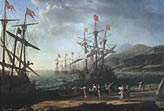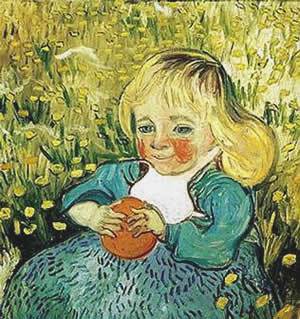
Clude Lorrain’s “The Trojan Women Setting Fire to Their Fleet” (c.1643), is a generous loan from the Metropolitan Museum of Art, New York
The Getty Museum acquires a Lorrain painting, a bust by Messerschmidt and an important English manuscript ]]>
February 21st 2008 – The J. Paul Getty Museum has announced the acquisition of The Vexed Man (after 1775), an alabaster bust by the 18th-century Austrian sculptor Franz Xaver Messerschmidt (1736-1783), and the illuminated Vita Christi , one of the finest examples of English Romanesque illumination.
With its unusual depiction of some of the lesser-known events from Christ’s life, the illustrated Vita Christi will be a central work in an upcoming exhibition Imagining Christ that will be on view at the Getty Center from May 6 through July 27, 2008. This is the first time this exceptionally beautiful manuscript has ever been displayed to the public, since it has previously resided in private collections. Messerschmidt’s The Vexed Man will initially go on view in the terracotta gallery of the Museum’s West Pavilion at the Getty Center. Eventually, it will be incorporated into a more permanent display pending other reinstallation plans.
“Both these objects will be revelations when they go on display,” explains Michael Brand, director of the J. Paul Getty Museum. “Acquiring them for the Getty will not only bring them to public view, it will also help inform the rest of our collection and allow us to contribute to scholarly research through our own efforts and through those of others who will now have the opportunity to study them.”
Franz Xaver Messerschmidt, an 18th-century German artist, is considered one of the most significant sculptors of the Viennese Enlightenment. He was trained in a late-Baroque style but his sculptural manner eventually evolved toward Neoclassicism. In 1769, he became a member of the Akademie in Vienna, but shortly thereafter he showed early signs of mental instability, which led to a loss of public and royal commissions and eventually his dismissal from the Akademie . Messerschmidt eventually moved to Pressburg (present-day Bratislava) where he continued to accept formal portrait commissions and to work on the remarkable series of Character Heads , to which The Vexed Man belongs.
With the acquisition of the Vita Christi , the Museum has supplemented its superlative holdings of illuminated manuscripts with the finest example of English Romanesque illumination remaining in private hands. This rare manuscript contains over 100 illuminations from the 12th and 15th centuries. The 51 miniatures dating from the 12th century likely served as an elaborate pictorial preface to a psalter, an important genre of English illumination that was not previously represented in the manuscripts collection. Romanesque Psalters (which contained the Old Testament Book of Psalms and other devotional material) were particularly noted for their striking visual qualities and for their detailed narrative cycles. Such cycles often elaborated on the life of Christ, allowing medieval Christians to link the Old and New Testaments.
Also, two masterpieces by Claude Lorrain (Claude Gellée) (c. 1604/5-82)-the great French classical landscape painter-will go on view alongside the Getty’s stellar collection of Baroque paintings in the East Pavilion of the J. Paul Getty Museum at the Getty Center. The first, Coast View with the Abduction of Europa (c. 1645), was acquired by the Museum in September 2007, and will be permanently installed in these galleries alongside other highlights from the collection including Rubens’s Calydonian Boar Hunt (about 1611-12) and Rembrandt’s Abduction of Europa (1632). The second, The Trojan Women Setting Fire to Their Fleet (c.1643), is a generous loan from the Metropolitan Museum of Art, New York, which will be on view until May 11.
Follow us on:


